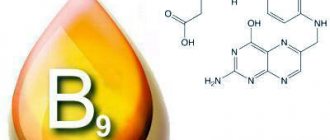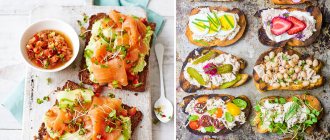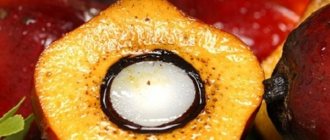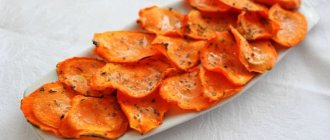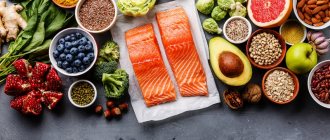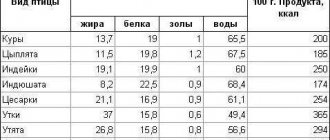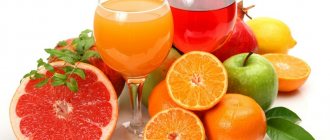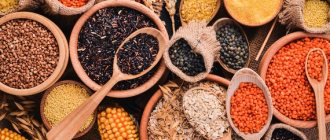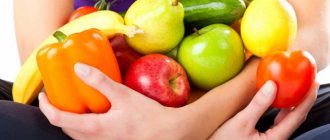What kind of fiber is there?
What is fiber?
In the 1970-80s, biologists were categorical - this is a ballast substance that is not digested in the body and settles in it as ballast. But they soon came to their senses: fiber is the dietary fiber of plants and grains, which is contained in the stems, dense shell, cells, what kind of ballast it is! In the body they did not deceive! – are not digested, gastrointestinal enzymes do not take them. But they take beneficial microorganisms - intestinal microflora and its builders, probiotics. They feed on fiber, and this makes the body healthy, resilient, slim and beautiful.
Fiber is not just one super substance; there are many fibers. Vegetables and fruits, grains and legumes – you can find different “grades” of prebiotics in your usual food. Fiber has a lot of classifications, but we’ll leave it to chemists to understand the intricacies of its composition. We are only interested in one typology:
- Insoluble. These are cellulose and lignin. Such dietary fiber clumps into a hard ball, rolls throughout the body and cleans out all harmful substances. The body, trying to digest this mysterious mass, spends a lot of energy - the result is a healthy mini-diet!
- Soluble. These are pectins, gums, hemicelluloses. This kind of fiber is a real magician. When it enters the body, it quickly absorbs liquid, swells several times, and you immediately feel full. Hunger after such a meal comes later than usual, you eat less - this is another secret of a wonderful figure.
Fiber-rich foods
Healthy eating involves calculating your calories, including foods rich in vitamins and nutrients, avoiding saturated fat, and paying particular attention to sources of dietary fiber. Insoluble fiber plays a major role in the body, one of which is to ensure optimal bowel function, as well as regulate the pH level of acidity in the intestines.
Beneficial properties of insoluble dietary fiber:
- Promotes regular bowel movements and prevents constipation, reduces the risk of developing colitis, hemorrhoids and colon cancer;
- Accelerate the removal of toxic substances from the body through the colon;
- By maintaining an optimal pH balance in the intestines, insoluble fiber helps prevent the proliferation of pathogenic microflora that can lead to colorectal cancer.
Dietary sources of insoluble fiber include vegetables and greens—especially dark leafy greens, root skins, fruit skins, whole wheat products, corn and wheat bran, nuts, and seeds.
Functions and beneficial properties of soluble fiber
Soluble fiber binds fatty acids, slows the time and rate at which sugar is absorbed by the body, helping regulate blood sugar levels, and promotes normal gastrointestinal function.
Benefits of Soluble Fiber:
Reduce cholesterol levels, especially LDL (bad cholesterol) levels, thereby reducing the risk of developing cardiovascular diseases; Regulates the absorption of sugar by the body, this is important, especially for people suffering from diabetes and metabolic syndrome. People with diabetes who consume a lot of fiber have lower insulin requirements than those who consume less. Dietary sources of soluble dietary fiber include: beans, pinto beans, broccoli, Brussels sprouts, zucchini, spinach, oranges, apples, grapefruits , prunes, grapes, oatmeal and whole grain bread
Food sources of soluble fiber include: beans, pinto beans, broccoli, Brussels sprouts, zucchini, spinach, oranges, apples, grapefruits, prunes, grapes, oatmeal and whole grain bread.
The norm of fiber for the human body
Most nutritionists say the ratio of insoluble to soluble fiber should be 75% and 25%, respectively, or 3 parts insoluble fiber to every 1 part soluble. Since most foods containing high amounts of fiber are of both types, this is something to consider.
Oats, oat bran, psyllium husk and flax seeds are rich in both types of dietary fiber
In other words, your focus should not be on any specific type of fiber, but on your fiber intake in general. For example, if you consume 25g of fiber every day, then you are already meeting your daily needs
Ideally, this is five servings of vegetables and fruits, as well as a small portion of whole grains, daily
For example, if you consume 25g of fiber every day, then you are already meeting your daily needs. Ideally, this is five servings of vegetables and fruits, plus a small portion of whole grains, daily.
In fact, statistics show that the majority of people around the world consume dietary fiber daily much lower than normal, approximately 15 g. About 80% of the population suffers from such a deficiency.
Other reasons to eat fiber
Eating fiber daily has great health benefits. For example, including high fiber foods in your daily diet can help you lose weight. Dietary fiber fills the stomach and makes you feel full without adding calories (since calories from fiber are not absorbed by the body) - this helps treat or prevent excess weight and obesity.
Take, for example, vegetables, fruits and whole grains. All of them are not only high in fiber, but also rich in vitamins and other essential nutrients. In other words, if you're looking for foods high in fiber, consuming them will not only protect your health because of the fiber they contain, but also because you'll be getting extra essential nutrients.
The benefits of fiber
The inclusion of dietary fiber products in the diet is especially necessary for the female body. Fiber accelerates the removal of excess sex hormones estrogen - a common cause of genital tumors in women.
Estrogens end up in the intestines with bile. Eating foods rich in dietary fiber removes hormones from the intestines, and their levels in the blood drop. When estrogens are retained in the intestines for a day or longer, they are reabsorbed into the blood.
Thus, the more plant fiber in food, the lower the risk of developing tumors and heart diseases. Raw foods that have not been subjected to heat or mechanical processing (mashed potatoes) contain more healthy fiber. There is a lot of it in porridges.
- Oatmeal contains a lot of fiber, which envelops and relieves inflammation of the gastric mucosa.
- Wheat porridge promotes the activity of the brain, heart, blood vessels, and organs of the digestive system.
- Millet porridge improves intestinal motility, normalizes fat metabolism and blood glucose levels.
- Barley porridge is especially useful for metabolic disorders, it creates a feeling of fullness for a long time, and has a mild laxative effect.
You can add berries, nuts, fruits, and raisins to porridge. It is worth giving up cakes and buns. Eat bread with bran or wholemeal flour.
Fiber foods are good to eat throughout the day, not just for breakfast. A low-fat, high-fiber diet is beneficial in treating diabetes.
[custom_ads_shortcode3]
Simple recipes for dishes enriched with fiber
Easy-to-prepare dishes will help replenish the lack of fiber in the body.
Russian salad
Components:
- cabbage - 20 g;
- apples - 2 pcs.;
- carrots - 2 pcs.;
- radish - 1 pc.;
- greens (dill) - 10 g;
- vegetable oil - 40 g;
- Chili pepper and 1 tbsp. l. vinegar.
Cabbage, peeled apples, carrots and radishes are finely chopped and mixed thoroughly. Season with vinegar mixed with salt and chili pepper. Vegetable oil is added to the resulting mass. The finished salad is laid out in a heap and sprinkled with chopped herbs on top.
Baked apples stuffed with dried fruits
Components:
- apples - 4-5 pcs.;
- prunes;
- hazelnut;
- dried apricots;
- almond;
- lemon;
- sugar - 80 g;
- butter - 20 g.
Dried apricots and prunes are soaked in water, then boiled for 5 minutes. Cut into cubes, mix with chopped nuts, butter and 40 g of sugar. The filling is placed in apples that have previously been freed from seed pods and some of the pulp. The fruits are laid out on a greased baking sheet, sprinkled with the remaining sugar and poured over with lemon juice. Apples are baked at 180 °C.
Fried mushrooms with nuts
Components:
- fresh white mushrooms - 0.5 kg;
- half a glass of shelled walnuts;
- medium-sized onion;
- butter - 80 g;
- cilantro;
- parsley;
- Apple vinegar;
- salt;
- ground pepper.
Mushrooms, salted and cut into slices, are fried in butter until fully cooked. Pour in vinegar mixed with pepper, mix with chopped nuts and onions. The finished dish is decorated with chopped herbs.
Kissel from dried apricots
Components:
- dried apricots - 30 g;
- water - 180 g;
- a teaspoon of starch;
- a tablespoon of sugar.
Dried apricots are poured with boiling water and infused for at least 2 hours. Sugar is added to the resulting infusion, brought to a boil. The mixture is cooked for about 30 minutes over low heat. The broth is filtered, the dried apricots are rubbed using a sieve. The resulting puree is combined with the broth and brought to a boil. All that remains is to pour in the starch diluted with cold water in a thin stream and bring the jelly to a boil, stirring constantly.
By enriching your daily diet with fiber, you can confidently expect the following changes for the better:
- comfortable digestion;
- soft regular stools;
- effective weight loss;
- strengthening the immune system;
- prevention of various diseases.
Additional benefits will come from moderate physical activity and healthy eating.
What else to read:
Healthy Recipes
Medicinal dessert
Add crushed walnuts, raisins, dried apricots, a little honey, and cinnamon on the tip of a knife to the ground fiber. Mix everything and season with sour cream and lemon juice.
Pancake for breakfast
Mix 1 white or whole egg, 2 tbsp. spoons of oatmeal, 1 tbsp. a spoonful of ground bran or fiber and a little kefir - so that the dough turns out thicker than for pancakes, but thinner than for pancakes. Add a little soda, sugar and salt. Grease a frying pan with vegetable oil, heat it up and pour half of the mixture into the center of the pan and then carefully spread it over the pan with a spoon. You can sprinkle sesame seeds, flaxseed or shelled sunflower seeds on top. When the pancake “sets”, turn it over and brown on the other side. The finished pancake can be greased with a piece of butter. The dough according to the recipe produces two such pancakes - dense, filling and very tasty.
Hearty pancakes
Knead the dough from 1 egg, a pinch of salt, 1 tbsp. spoons of sour cream or milk, soda on the tip of a knife, 3 tbsp. spoons of ground fiber, 1 tbsp. spoons of vegetable oil. Spoon the dough into pancakes into a heated frying pan, cover with a lid and reduce the heat to low. Fry until done.
Zucchini pancakes
Pass the zucchini without the peel through a meat grinder, squeeze out the juice, mix with the egg, add salt, bran to make a thick dough, salt and fry in vegetable oil heated in a frying pan.
Cabbage casserole
Mix 1 glass of warm milk with 1 glass of ground fiber, let it brew for about ten minutes, add 100 g of butter, salt, 1 egg. Grate some cabbage and mix with the dough. Place in a greased pan and bake until crust forms.
Homemade bread
Knead 7 cups of flour, 1 pack of dry yeast, 600 ml of water, 0.5 cups each of ground rye and wheat fiber into the dough. Add salt and sugar to taste. Let the finished dough rise for 3-4 hours, then with your hands greased with vegetable oil, place it in a greased pan and bake in the oven until an appetizing crust forms.
city "Stoletnik" No. 21, 2013
Did you like the article? Tell your friends:
Chat with me:
Categories Food-Medicine • Tags: Food-Medicine • Top
Tips for consuming fiber
- For good gastrointestinal function and weight loss, fiber is necessary. Therefore, regularly consume fruits, vegetables, nuts, dried fruits, seeds, legumes, whole grains, bran or wholemeal bread.
- If possible, reduce the amount of refined foods that lack fiber. Those. give preference to brown rice, bran bread, and cane sugar. Remember that dairy products and meat contain no dietary fiber at all.
- During heat treatment, the amount of dietary fiber in vegetables is halved in just 20 minutes of cooking. Try to consume vegetables fresh or cook them as sparingly as possible, adding them only at the end of cooking.
- The record holder for the content of plant fibers is bran. Add them to porridge, soup, kefir - this will reduce appetite and improve digestion. Before doing this, the bran can be soaked in warm water and waited for 20 minutes until it swells. If you add bran to soup, it can completely replace bread, and your lunch will be more nutritious and healthy. By the way, if you want to prepare a tasty and aromatic soup, then look here for many options for pickle.
- If your diet contains a lot of vegetables, fruits, and cereals, then you don’t need to consume bran. In all other cases, this product is indispensable.
- In some people, consumption of coarse fibers, even within normal limits, can cause flatulence. This is explained by the peculiarity of the intestinal microflora. In this case, consume fiber in small portions, gradually adapting your body to its consumption.
- You should not consume fiber in excess. Since it is a sorbent for cleansing the body, useful microelements and vitamins can also be excreted along with toxic substances. Dietary plant fibers are an essential substance for humans, but they should not be abused.
- Fiber absorbs a large amount of liquid, so be sure to accompany its intake with plenty of water (an additional 2-3 glasses of water per 20-30 grams of dietary fiber).
- If you feel that you are not consuming the right amount of dietary fiber through regular foods, you can buy special supplements. Fiber can be made in the form of powder, granules and even special bars. Moreover, both individual types (cellulose, hemicellulose, lignin, pectin, gums) and combined versions are sold.
- The approximate daily fiber intake is 35-45 g (at least 25 g). Read more about fiber content in foods below. If you decide to increase your intake of dietary fiber, you need to do this gradually. An example of a menu that shows the daily fiber intake:
Fiber content in products: tables
In order to understand how much dietary fiber you consume, we offer you tables with fiber content in foods:
High fiber foods:
Scientists have proven that adequate fiber intake significantly reduces the risk of many diseases.
That's why it's so important to eat fresh vegetables and fruits, legumes and grains, seeds and bran. Fiber is also effective for weight loss, because it reduces appetite and helps cleanse the body of toxins.
Beneficial properties of fiber
- Fiber lowers cholesterol, which reduces the risk of developing cardiovascular diseases.
- Fiber also lowers blood sugar levels and, as a result, prevents the development of diabetes.
- Fiber cleanses our body of toxins; fiber reduces the residence time of food in the gastrointestinal tract.
- Fiber quickly makes you feel full, which reduces the likelihood of overeating.
- Fiber prevents our body from absorbing harmful substances that enter our body with food.
- Fiber has a beneficial effect on intestinal function and normalizes the state of microflora in the intestines.
- Fiber improves metabolism in our body.
- Foods rich in fiber contain a lot of magnesium and potassium, and these microelements have a positive effect on the heart.
- Fiber does not interfere with the intake of microelements and vitamins into our body; fiber-rich foods themselves contain many vitamins and nutrients beneficial to our body.
- Fiber reduces the risk of cancer.
What foods contain fiber:
- The most important sources of fiber are fruits, vegetables, and nuts.
- Fruits that contain fiber are apples, oranges, pears, plums, apricots.
- Berries that contain fiber are raspberries, strawberries, strawberries, blackberries.
- Vegetables that contain fiber are red beets, pumpkin, zucchini, carrots, cabbage, parsley, dill, tomatoes, green peas.
- Also, in addition to fresh fruits, fiber is also present in dried fruits: dried apricots, raisins, prunes, dates.
- Nuts containing fiber are walnuts, peanuts, pistachios, hazel, almonds.
- Fiber is also present in oatmeal, bran bread, corn, buckwheat, and legumes.
How much fiber should we consume per day? The general recommendation is about 25 to 30 grams of fiber per day, and for diabetics, about 50 grams of fiber per day. Try to keep your daily fiber intake to at least 35 grams.
And here is a table of fiber content in products.
| Product | A portion | Fiber mass, g |
| Fruits | ||
| Apple | 1 PC | 4 |
| Avocado | 1 PC | 8 |
| Banana | 1 PC | 3 |
| Blueberry | 200 gr | 4 |
| Dried figs | 5 pieces. | 9 |
| Kiwi | 1 PC. | 3 |
| Papaya | 1 PC. | 5 |
| A pineapple | 200 gr | 2 |
| Prunes | 10 pieces. | 1,6 |
| Raspberries | 200 gr | 8 |
| Strawberry | 200 gr | 3 |
| Whole grains (cooked) | ||
| Brown rice | 1 glass | 4 |
| Buckwheat | 1 glass | 17 |
| Quinoa | 1/4 cup | 3 |
| Oat bran | 1/3 cup dry | 2 |
| Oatmeal | 1/2 cup | 2 |
| Vegetables | ||
| Artichokes | 100 gr | 2 |
| Asparagus | 4 pods | 1 |
| Green bean | 200 gr | 4 |
| Broccoli | 200 gr | 4 |
| Cabbage | 200 gr | 3 |
| Onion | 200 gr | 2 |
| Mushrooms | 200 gr | 4 |
| Baked potato | 1 PC | 5 |
| Spinach | 200 gr | 4 |
| Cooked legumes | ||
| Red beans | 1/2 cup | 6,5 |
| Pint beans | 1/2 cup | 7 |
| Lentils | 1/2 cup | 8 |
| Peas | 1/2 cup | 7 |
| Nuts | ||
| Almond | 30 gr | 4 |
| Cashew | 30 gr | 1 |
| Brazilian nut | 30 gr | 1,5 |
| Pistachios | 30 gr | 3 |
| Walnut | 30 gr | 2 |
Some recommendations for consuming fiber:
- Increase your fiber intake in your diet gradually. Also drink enough water.
- It's best to start the day with a bowl of whole grain porridge.
- Try to include fruits, vegetables, and legumes in your diet.
- You can also add dried fruits, fresh berries and fruits, and nuts to the porridge.
- When peeling fruits and vegetables, the fiber in them is not destroyed.
- Whole grains are the best “supplier” of fiber to our body.
- For dessert, it is best to eat fresh fruit rather than sweets.
- Buy whole grain cereals.
Fiber for weight loss.
Everyone knows that consuming fiber not only lowers sugar, but also lowers cholesterol and prevents obesity and promotes weight loss. What happens is that by consuming food rich in fiber, it increases in volume in the stomach, therefore you eat less, and satiety occurs faster
In addition, the intestines are cleansed of toxins and waste, fiber also has a beneficial effect on the development of proper microflora in our intestines, and this is very important for our health.
Eat natural foods in the form in which nature created them, because nature itself takes care of our health. Now you know which foods contain fiber, eat foods rich in fiber and be healthy.
Food alternative
First of all, let's figure out why we need dietary fiber in the first place. Fiber is not digested or absorbed, its nutritional and energy value tends to zero. And with all this, the benefits of fiber are enormous - being coarse, fibrous, quickly and strongly (about 4 times) swelling even from a small amount of water, it plays the role of a waste cleaner and stimulator of digestive processes . Everything unnecessary will be removed, everything necessary will be put into operation and debugged. Here's what it looks like in detail.
1. Fiber accelerates intestinal motility, that is, its motor activity. The more fiber in a food, the faster it moves through the digestive tract. For example, buns made from white flour will not make the meat stew eaten with them go to the “exit” faster than in 3 days, but if instead of buns you eat wholemeal bread with bran, the food will speed up the progress to 1-1.5 days. Why is this necessary? The less food you eat hangs around the gastrointestinal tract, the fewer toxins are absorbed through the fleecy walls of the intestines. After all, prolonged digestion occurs along with the processes of rotting and fermentation.
2. Due to its good absorption, fiber instantly creates a feeling of fullness. This helps you to refrain from eating too much while eating.
3. Coarse fibers, like a brush, clean the intestinal walls of toxins and harmful toxic deposits, and also absorb heavy metal salts, preventing their absorption.
4. Fiber helps eliminate “bad” cholesterol, preventing the development of coronary heart disease, early aging and atherosclerosis.
5. Fiber serves as food for beneficial bacteria, which multiply more actively, which ultimately helps normalize the microflora in the intestines.
6. Fiber reduces the risk of developing many malignant tumors .
All this does not prevent fiber itself from being used to serve the appetite.
What foods contain a lot of fiber?
Fiber is divided into two types:
- soluble,
- insoluble.
Products rich in the first type of fiber are apples, cabbage, citrus fruits, broccoli, wholemeal flour, various berries, seeds, oats. This fiber can be turned into a jelly-like mass; it is more gentle on the stomach.
Insoluble plant fiber is found in foods such as legumes, grains (mainly in their shells), and in the peels of vegetables and fruits.
What foods contain fiber?
An adult needs 20-30 grams of fiber to avoid problems with digestion, intestinal microflora, and the elimination of toxins and heavy metals.
Therefore, it is important to know which foods contain fiber.
They contain a lot of plant fiber:
- stems,
- roots,
- fruit,
- tubers,
- leaves.
The list of foods containing a lot of fiber starts with the vegetables we are used to. Carrots, cucumbers, tomatoes, beets, peas, beans, broccoli, radishes are vegetables rich in fiber.
Foods containing fiber also include fruits, berries and nuts. Especially pear, apple, grapes, peaches, pistachios and figs.
But the highest fiber content is:
- buckwheat,
- cereals,
- other types of whole grains.
Bread with bran is especially useful.
Please note that foods containing a lot of fiber must be consumed fresh and should not be cooked. Avoid the following additives in foods: inulin, polydextrose, maltodextrin
Avoid the following additives in foods: inulin, polydextrose, maltodextrin.
Many people consume milk, fish, meat, cheese, thinking that they are enriching their body with healthy fiber, but we note that these are products that do not contain fiber.
Amount of fiber in food
List of foods high in fiber. The amount of fiber in products is indicated per 100 grams:
- Beans and peas - 15%;
- White rice and wheat - 8%;
- Oats and barley - 8–10%;
- Nuts, almonds, olives -10-15%;
- Fresh vegetables - 2–5%. Vegetables with the most fiber: green peas, Brussels sprouts, broccoli, asparagus, carrots;
- Berries - 3–7%. Raspberries and blackberries contain the most fiber;
- Fruits and citrus fruits - 5–10%. The following fruits contain the most fiber: bananas, peaches, pears and apples.
Table of foods containing fiber
You can quickly create your own diet by including foods that contain fiber. published by econet.ru
| Name | Quantity | Fiber (grams) |
| Fruits | ||
| Apples with skin | 1 average | 5,0 |
| Apricot | 3 medium | 0,98 |
| Apricots, dried | 5 parts | 2,89 |
| Banana | 1 medium | 3,92 |
| Blueberry | 1 cup | 4,18 |
| Cantaloupe, cubes | 1 cup | 1,28 |
| Dried dates | 2 medium | 3,74 |
| Grapefruit | 1/2 medium | 6,12 |
| Orange | 1 medium | 3,4 |
| Peach | 1 medium | 2,0 |
| Peaches, dried | 3 parts | 3,18 |
| Pear | 1 medium | 5,08 |
| Plum | 1 medium | 1,0 |
| Raisin | 1.5 ounces | 1,6 |
| Raspberries | 1 cup | 8,34 |
| Strawberry | 1 cup | 3,98 |
| Vegetables | ||
| Avocado (fruit) | 1 medium | 11,84 |
| Beets, cooked | 1 cup | 2,85 |
| Beet leaves | 1 cup | 4,2 |
| Bok choy, cooked | 1 cup | 2,76 |
| Broccoli, cooked | 1 cup | 4,5 |
| Brussels sprouts | 1 cup | 2,84 |
| Cabbage, cooked | 1 cup | 4,2 |
| Carrot | 1 medium | 2,0 |
| Carrots, cooked | 1 cup | 5,22 |
| Cauliflower, cooked | 1 cup | 3,43 |
| Slaw | 1 cup | 4,0 |
| Sweet corn | 1 cup | 4,66 |
| Green bean | 1 cup | 3,95 |
| Celery | 1 stem | 1,02 |
| Collard greens, cooked | 1 cup | 7,2 |
| Fresh onions | 1 cup | 2,88 |
| Peas, cooked | 1 cup | 8,84 |
| Bell pepper | 1 cup | 2,62 |
| Popcorn | 3 cups | 3,6 |
| Potatoes baked in their jackets | 1 medium | 4,8 |
| Spinach, cooked | 1 cup | 4,32 |
| Pumpkin, cooked | 1 cup | 2,52 |
| Sweet potatoes, boiled | 1 cup | 5,94 |
| Chard, cooked | 1 cup | 3,68 |
| Tomato | 1 medium | 1,0 |
| Large-fruited pumpkin, cooked | 1 cup | 5,74 |
| Zucchini, cooked | 1 cup | 2,63 |
| Cereals, grains, pasta | ||
| Bran bread | 1 cup | 19,94 |
| Whole wheat bread | 1 slice | 2,0 |
| Oats | 1 cup | 12,0 |
| Whole grain pasta | 1 cup | 6,34 |
| Cinnamon rice | 1 cup | 7,98 |
| Legumes, nuts, seeds | ||
| Almond | 1 oz (28.35 g) | 4,22 |
| Black beans, cooked | 1 cup | 14,92 |
| Cashew nuts | 1 oz (28.35 g) | 1,0 |
| Flax seeds | 3 spoons | 6,97 |
| Chickpea fruits (beans), cooked | 1 cup | 5,8 |
| Beans, cooked | 1 cup | 13,33 |
| Lentils, cooked | 1 cup | 15,64 |
| Lima beans, cooked | 1 cup | 13,16 |
| Peanut | 1 oz (28.35 g) | 2,3 |
| Pistachios | 1 oz (28.35 g) | 3,1 |
| Pumpkin seeds | 1/4 cup | 4,12 |
| Soybeans, cooked | 1 cup | 7,62 |
| Seeds | 1/4 cup | 3,0 |
| Walnuts | 1 oz (28.35 g) | 3,1 |
LiveInternetLiveInternet
Tuesday, June 02, 2009 10:58 + to quote book KREMLIN-STYLE PANCAKES 13 grams of carbohydrates for the entire serving.
1/2 cup ground flax seeds, 1/4 teaspoon baking powder (soda, for example), 2 eggs, 2 tablespoons melted butter or melted butter, 3 large spoons of homemade cheese (I just put cottage cheese), 1/4 cup cream( I put milk), sugar substitute to taste. Mix and bake like regular pancakes. If it is very thick, add cream or water. “BREAD” FROM COOK. It turns out to be 1 per piece. I take 300-400 grams of cottage cheese (drier), 1 egg, crushed garlic, 50 grams of melted plums. oils 2-3 tbsp soy flour, fiber, 4-5 tbsp to make the knead thicker. I spread the flatbreads in a thin layer on a greased baking sheet and put them in the oven until they are browned. I keep it at a low temperature longer so that it dries out a lot, then it turns out crispy!! Delicious, great for sandwiches with everything!! CHICKEN PANCAKES. 500g. chicken fillet. 250g. Mayonnaise, 1 egg, 1 tbsp. fiber approx. 10g. Cut the chicken into small cubes, no more than 1 cm, smaller if possible. Pour in mayonnaise and refrigerate for 2 hours. Add the egg and fiber (so as not to fall apart), stir, you can add a little salt, but it depends on who you like. Take the dough and fry in a frying pan in hot vegetable oil like pancakes. KHACHAPURI ACCORDING TO KD Bran (fiber) 1.5-2 tbsp, egg 1 pc, cheese 50-100 g (as much as your conscience allows you to eat at a time), cottage cheese 50-100 g At the bottom of a frying pan or baking dish (diameter 20-25 cm) pour out the bran and spread it evenly over the entire surface in a thin layer (well, you can do it thicker, then take 2 tablespoons or more of bran). Everything that is not covered with bran will stick to the mold. Beat the egg in a bowl, add grated cheese and cottage cheese. Mix thoroughly so that the mass is homogeneous, without lumps. Carefully spread the resulting mass in a thin layer onto the frying pan with the bran, without stirring, so that the bran ends up at the bottom. Place our mold in an oven preheated to maximum temperature and wait until the bran is fried to a golden color and the top cheese mass has hardened. COOKING CHEESE Continuing to experiment in my kitchen, I really wanted to bake something delicious. Having found not very fresh cottage cheese in the refrigerator, I remembered such a yummy as cheesecake! Yessss without flour. Try it, it's very similar to regular one. 500g cottage cheese, 1 egg, sakhzam, fiber (bran), pieces of drained butter, 100g sour cream, soda. Mix cottage cheese with 1 egg. Dilute sakhzam to taste in a small amount of water and add to the cottage cheese. Stir thoroughly. Grease a round baking dish with oil and pour bran onto the bottom to cover the entire bottom. Spread the mixture onto the bran, leaving 1 cm from the edge. Stick pieces of drained butter (6 pieces) evenly over the surface. Mix 100g of sour cream with a pinch of soda and spread the cottage cheese over the entire surface (you will get a golden crust. In a hot oven for 30-40 minutes at a temperature of 180. As soon as the crust appears, it’s ready! CABBAGE PIE 1 tbsp warm milk, 1 tbsp fiber, 100g drained butter (melt) , egg, half a medium head of cabbage. Mix the milk with fiber, let it sit for 10 minutes to make a thick dough, pour in melted butter, a little salt, beat in the egg. Separately, three half a head of medium cabbage on a coarse grater, mix with the dough. You can add more grated carrots and a little onion. Place in a greased form and in the oven until a crust forms, this is about 30-45 minutes. CRISPY COOKIES 2 tablespoons of finely ground flaxseed, 2 tablespoons of whole seeds, 1 egg, salt. You can add 1 tablespoon .a spoonful of poppy seeds and sweetener. Knead, place in the form of cookies on baking paper or in a silicone mold. 5 minutes in the microwave (1000 Watt). In the oven (non-ventilated) - at a temperature of 150-160 degrees, 10-15 minutes. You will get these crispy cookies CARROT CARD resembles a sponge cake, can be used as a base for a cake. 100g finely grated carrots, 4 eggs, 50g butter, 1.5-2 tbsp. fiber, sugar to taste, 1/3 tsp. soda (quench), vanilla on the tip of a knife. Shake the eggs with sugar, add the fiber, but not all of it, leave a little to sprinkle the bottom of the mold, let the dough stand so that the fiber swells, then add carrots (they must be grated before adding to the dough so that the juice does not have time to stand out), add vanilla, then immediately before baking, dissolved baking soda. I cut the butter into pieces and spread it evenly into a mold, I have it made of refractory glass, sprinkle it with the rest of the fiber and put it in the oven at about 180C. The same can be done from apples and other vegetables and fruits containing a lot of fiber. MUSHROOM PIE Mushrooms - 200g fried with onions (50g) 2 + 4.5 = 6.5 ue (here the onion “weights” the dish) Dough: 3-4 eggs - 1.5-2 ue, 50g butter - 0.7 ue (1.3 per pack), 2-2.5 tbsp. fiber – 0.1/3 tsp. soda quenched in a drop of 5% vinegar Shake the eggs, add fiber, but not all, leave 1 tsp. , even less for sprinkling the bottom of the mold, let the dough stand so that the fiber swells, then immediately before baking, dissolved soda. I cut the butter into pieces and spread it evenly into a mold, I have it made of refractory glass, I sprinkle it with the rest of the fiber, lay out the filling, pour the dough on top and put it in the oven at about 180C, it baked quickly, it rose like a sponge cake, I didn’t notice the time, as always I sat and “watched” " TOTAL 9.2 ye, and 1/4 of the pie is only 2.3 ye and it turned out to be a delicious mushroom pie, and most importantly it’s quick and not enough. VEGETABLE CAKE about 1 kg of zucchini, 2 eggs, 2 tbsp fiber (you can use more - check the consistency!). Cream: mayonnaise + finely chopped tomato, bell pepper, garlic, cucumber. Grate the zucchini (I do it on a food processor - it’s quick and my nails are intact), drain off the excess water, add eggs and fiber, and mix. Fry three cake layers (I make them in a Tefal pancake pan) on both sides. We coat the cakes with cream and decorate the top: I used tomatoes, peppers, leeks and parsley. It’s quick, but the main difficulty is turning the cakes in a frying pan; not everyone can do it. Aesthetically pleasing, cheap and beautiful. CLASSIC CHARLOTTE (with apples) 100g chopped summer apples, preferably sour ones, 3 eggs, 1/3 tsp. soda, vanillin on the tip of a knife, be careful with it, otherwise it will taste bitter, 1 tsp ground cinnamon without sugar, to taste, 2-3 tbsp fiber, (I made it for my husband with flour), salt to taste . Beat the eggs with 3 (you can choose as many as you need) crushed sakhzam tablets, add fiber, then soda, vanillin, the dough is liquid like for fiber pancakes. I have a heat-resistant glass mold; I put 50g of plums on the bottom of the mold. butter (more is possible), cut into slices, cubes, sprinkle with fiber about 1 tsp. and place the apples on top and sprinkle with ground cinnamon, pour the dough over the apples, spreading it evenly over the apple layer, you can also put pieces of butter on top. I baked it in an electric oven at a temperature of 160-180C, but I can’t say exactly what temperature and how long I baked for at least 30 minutes, I just looked at it. Here we calculate UE: 3 eggs + 100 apples + 3 tab. sahzam + 1 tsp. cinnamon + soda + 50 g plum butter + vanillin + fiber = (we don’t count fiber!) + eggs 1.5 + apples 9.5 + cinnamon 0.5 + butter drain0 .65=12.15 it turned out. PIZZA 3 egg whites, 2 yolks, 200g cottage cheese, 1/2 tbsp cream of tartar powder (great substitute for fiber), 1 spoon rast. butter, 1 tomato, 200g Mozzarella cheese. Beat the whites, cream of tartar and tsp very well until thick. salt, add yolks and cottage cheese, stirring with a fork. This will make the dough for the pizza base. Bake in a preheated oven in a non-stick pan, greased with drained oil for 15 minutes. Make a sauce from the tomato, grind it with spices and garlic, fry this mixture for a simmer. oil Spread tomato sauce on the cooled base, let it sit for a while, add what you want (sausage, mushrooms, pickled cucumber...), sprinkle with cheese, put in the oven for 10 minutes. CLASSIC Fiber pancakes Fiber, egg, salt, a little water, cx \deputy to taste. Break the egg into a bowl, add a little water (2-3 tablespoons per egg), sweeten as desired. Knead with fiber as for regular pancakes. Bake in heated oil on both sides until done. FLENSEED BREAD 1 tsp. yeast (5g per 38cu=1.9cu), sugar on the tip of a knife, a couple of tablespoons of warm water, a couple of tablespoons of olive oil, 70g of ground seeds, 2 eggs. A little salt. Dissolve yeast and sugar in warm water (precisely SUGAR!! - for the dough). Cover with a towel and set aside for 15 minutes for the yeast to rise. Beat the eggs separately, add oil, mix with yeast. Add flaxseed, stirring constantly. Let stand (the flax will swell and the mass will thicken). Place in portioned molds (you can use one), about 2/3 full (the bread will rise slightly). Bake until done in a preheated oven. Check readiness with a match (wooden stick). Output: 7pcs. one piece of bread – 1cu.e. (note: flaxseed - 6.00 per 100g) *** I cooked without eggs - just like bread, then count as 0.8.e. Tags:
diet cooking health
Cited 1 time
Like share
0
Like
- I liked the post
- Quoted
- 0
Saved
- Add to quote book
- 0
Save to links
Liked
0
Cellulose
One of the most important components of food products is dietary fiber. They are soluble and insoluble in water, of plant (mainly) and animal origin (rather an exception, for example, chitosan). But dietary fiber of plant origin is often classified as a separate group and is even called synonymous with the term dietary fiber. This is the so-called fiber.
The name “fiber” indicates the origin of these dietary fibers, since fiber is mainly represented by cellulose, the main component of plant cell walls, hemicellulose lignin, as well as other cell wall remnants.
The reason for the focus on fiber is that it makes up the bulk of the dietary fiber a person consumes. What are the main sources of dietary fiber? These are foods rich in fiber: fruits, vegetables, herbs, bran. Only a few fruits and vegetables have significant amounts of non-fibre fiber (for example, apples and citrus fruits are rich in pectin), but in other sources dietary fiber is predominantly fiber.
In percentage terms, the foods richest in fiber are grain bran, especially rye, wheat, oat bran (up to 50% fiber), whole grain flour products (up to 10%), beans (up to 8%), greens (up to 4%), and also carrots, cabbage, apples, potatoes, etc.
The mechanism of action of fiber is the same as that of all dietary fibers. In the small intestine, fiber is not digested, but it sorbs, that is, collects, bile acids, fats (which helps lower cholesterol in the blood) and some unwanted toxic substances, which fiber retains and removes with feces. By creating the required volume of content in the intestinal lumen, fiber helps normalize the volume and frequency of stool, as well as its consistency. This is why bran is so beneficial for those who suffer from disorders and constipation.
In the large intestine, fiber is a necessary substrate for beneficial microflora, that is, bacteria needed by the body. Here, fiber promotes the growth of beneficial microorganisms and thereby indirectly prevents the development of pathogenic and opportunistic microorganisms.
The physiological requirement directly for fiber has not been established (known only for dietary fiber in general: 20-30 g per day). However, the need for dietary fiber can be fully satisfied through foods rich in fiber, and the need for the latter, in turn, can be fully satisfied through bran, the benefits of which can hardly be overestimated.
1. Almonds
According to nutritionists, this generous gift of nature is the most valuable source of fiber.
250 g of nuts covers the daily requirement for dietary fiber. Almonds have a low glycemic index.
Therefore, its use helps to minimize the risks associated with excess weight at any age.
Important! Foods with a high glycemic index contribute to obesity.
Almond nuts are rich in phosphorus, potassium, magnesium, and vitamin E. Almonds can simply be eaten with yogurt, added to salads, muesli, and baked goods.
Recipe
Salad “Gift of Nature”
- Jar 150.0 “Activia” natural bio yogurt
- 300 g fresh broccoli - 10.0 g fiber
- 50 g almonds - 6.0 g fiber
- 50.0 shelled seeds - 4.0 g fiber
- 50 g raisins - 4.0 g fiber
- 2 tablespoons honey
- 1 tsp lemon juice
- Salt and pepper to taste
Place yogurt at the bottom of a deep salad bowl, pour over lemon juice and honey. Mix. Add chopped broccoli and almonds, seeds, raisins. Add a little salt and pepper. Mix. Leave in the refrigerator for 1 hour to intensify the flavor. Salad ready. Eat it with a slice of wholemeal bread and you'll get your daily fiber intake.
Properties of dietary fiber
Scientists and nutritionists know the properties of dietary fiber, some of which are listed below.
Firstly, they retain water in the intestinal lumen, thereby increasing the volume of the food bolus, stimulating peristalsis and accelerating the movement of harmful metabolic products through the intestines, thereby reducing the time of their contact with the mucous membrane of the colon.
Secondly, dietary fiber is able to bind and remove from the body substances such as cholesterol, mycotoxins, heavy metals, carcinogens, ammonia, bile pigments, etc. This is the reason that dietary fiber has a beneficial effect on cholesterol metabolism and reduces urea levels in the blood and also help neutralize toxins.
Thirdly, due to the presence of dietary fiber, the calorie content of vegetables is reduced. If, for example, the energy content of 100 grams of rye bread is 214 kcal, then 100 grams of eggplant - 24 kcal, zucchini - 23, white cabbage - 27, green onions - 33, carrots - 20, fresh cucumbers - 12, sweet peppers - 25, radishes - 28, lettuce - 14 and tomatoes - on average 16 kcal. Without having a high energy value, most vegetables, due to the abundance of fiber, contribute to an early and fairly persistent feeling of fullness.
This property of dietary fiber can hardly be overestimated in the complex of measures used for the prevention and treatment of nutritional obesity.

